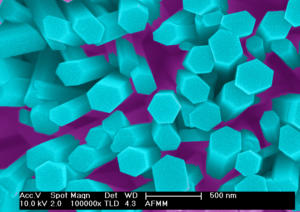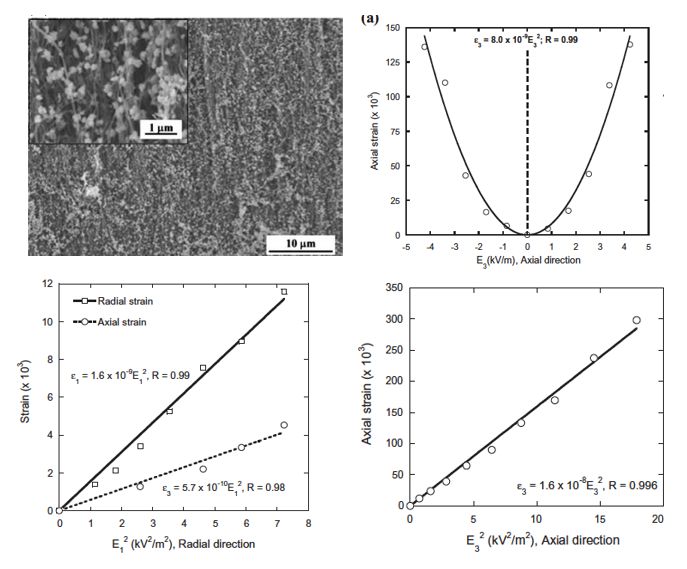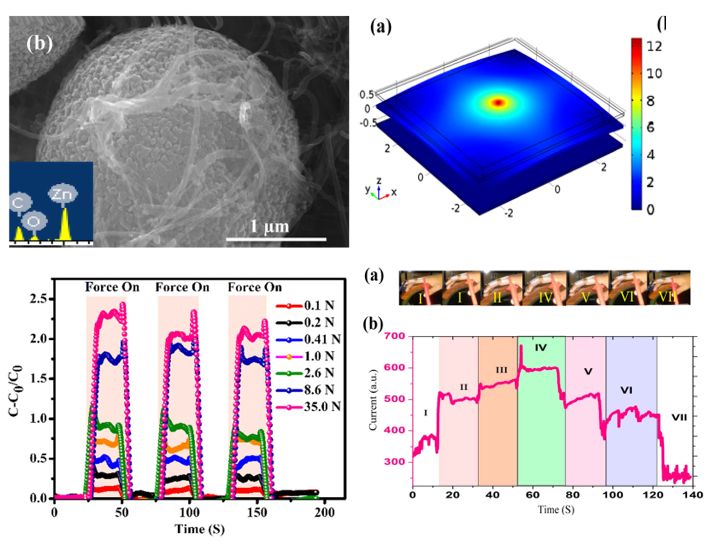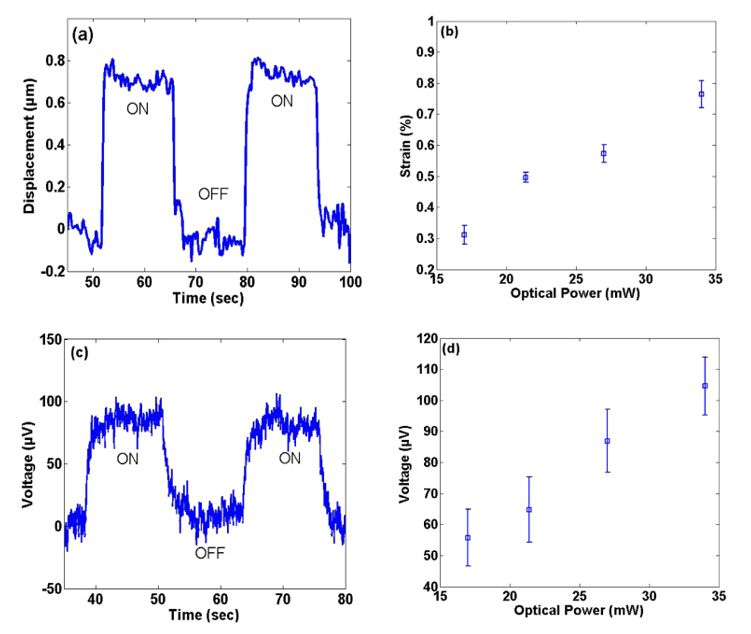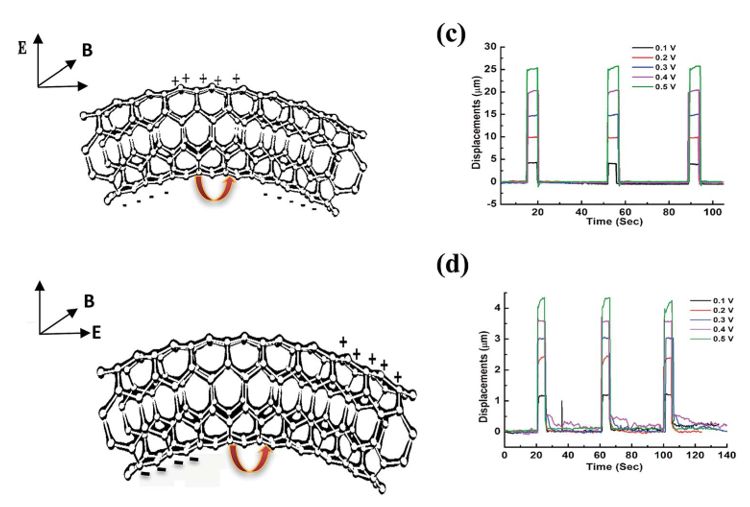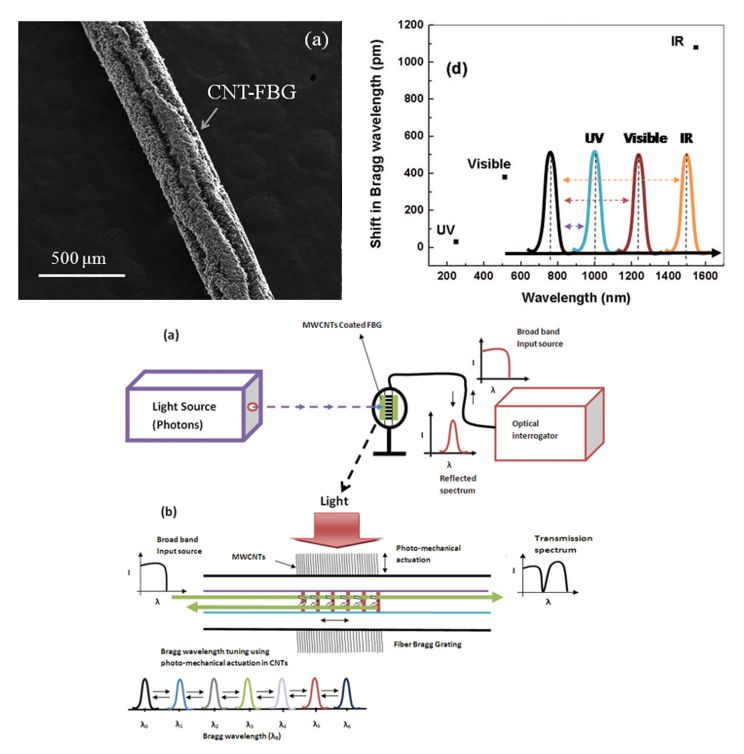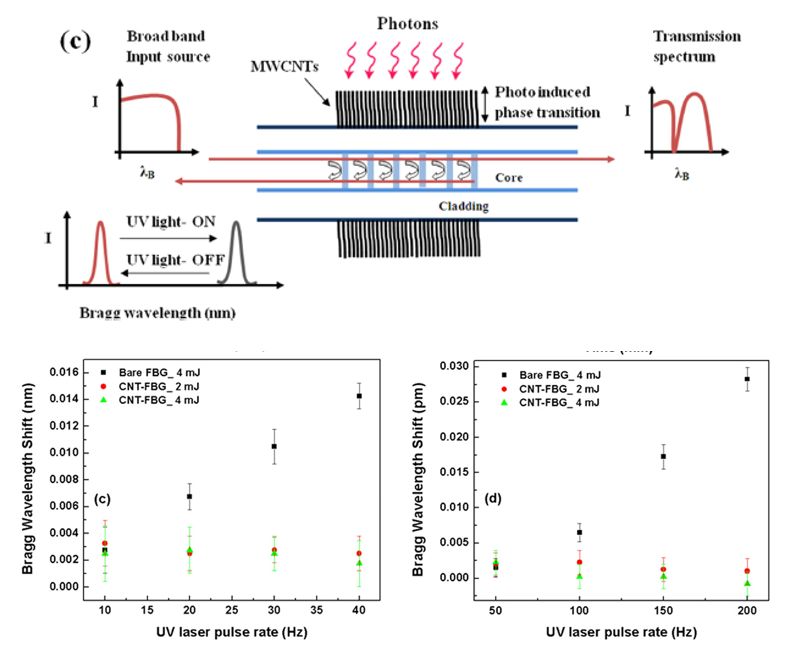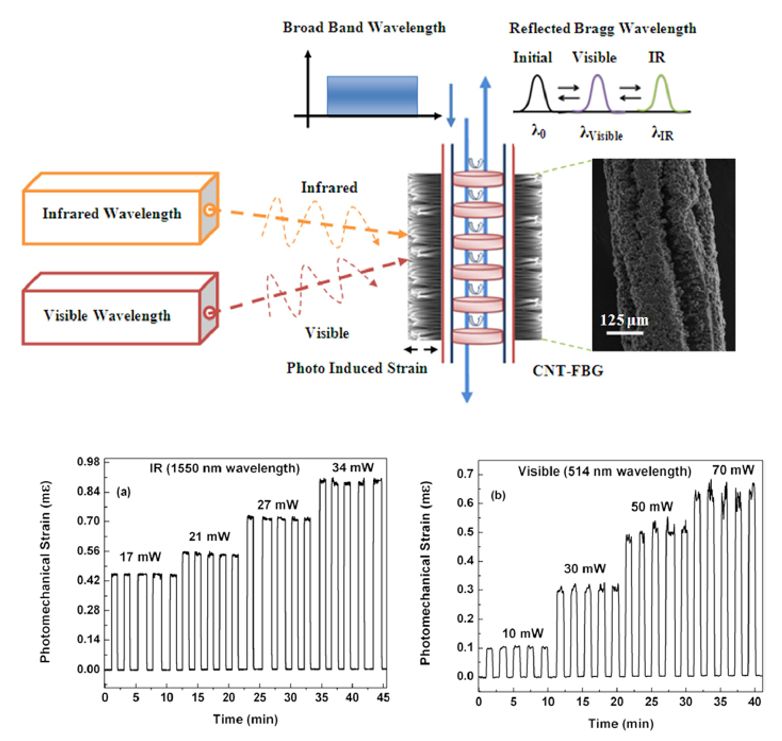Load bearing capability of a multilayered structure demonstrated conjugative role of hybrid constituents including carbon nanotubes. The parametric evaluation of multi effects on actuation mechanism of designed materials is being explored. Mechanical motion of nanoscale objects has drawn tremendous interest in various fields like MEMS based devices for efficient ultrahigh actuation, tools for atomic manipulation, precise motion control in systems. Energy efficient tools etc. Our approach on developing opto-electronic actuators from carbon nanotubes has demonstrated vast variety of applications through the implementation of novel approaches to enhance actuation.
Electric field induced ultra-high actuation in a bulk
carbon nanotube structure
Figure: CNT sample loaded with copper oxide
nano-particles. Electric field induced ‘‘steady-state’’ actuation, in terms of
(a) axial strain, in the CNT cellular structure as a function of the applied
electric-field in the axial direction.
Reference: CA R B
O N 6 7 ( 2 0 1 4 ) 5 4 6 –5 5 3 (https://doi.org/10.1016/j.carbon.2013.10.027)
Capacitive behavior of carbon nanotube thin film
induced by deformed ZnO microspheres
Figure: SEM image of the surface of a single ZnO microsphere.
Simulation of hybrid ZnO single microsphere/MWCNT structure. Cyclic response of
the device at different applied forces. Motion detection using the fabricated
flexible device. (a) Photographs of the motion of the finger when it was
gradually folded (I–IV) and released (V–VII). (b) The DC current response of the
device.
Reference: Nanotechnology
28 (2017) 395101 (doi: 10.1088/1361-6528/aa7df7)
Coupling of photomechanical and electromechanical actuations in carbon Nanotubes
Figure: (a) The induced displacement in the MWCNT
sheet plotted with the exposure time of the IR source. (b) The induced strain
is plotted with IR laser power varying from 17 to 34 mW. (c) Generation of the
photovoltage is shown with the IR exposure time. (d) Magnitude of photovoltage
variation with the IR power.
Reference: Nanotechnology
24 (2013) 105501 (DOI:
10.1088/0957-4484/24/10/105501)
Giant actuation in bulk carbon nanotubes under coupled
electric and magnetic fields
Figure: (a) Unequal separation of charges
along the radial direction of the CNT leading to an enhanced actuation under
the configuration of axial actuation. (b) Charge separation along the axial
direction of the CNT under the configuration of radial actuation. Displacement
plotted against time for (c) axial (d) radial actuations. Arrows indicate the
direction of the induced torque.
Reference: RSC
Adv., 2015, 5, 26157–26162 (https://doi.org/10.1039/C5RA01174D)
Carbon nanotube coated fiber Bragg grating for photomechanical optic modulator
Figure: SEM image of the CNT, coated around
circular surface of the FBG. the comparison of the Bragg wavelength shift
observed with respect to different wavelengths of light.
Reference: Rev.
Sci. Instrum. 84, 095101 (2013) (https://doi.org/10.1063/1.4819742)
Monitoring of ultraviolet pulse rate dependent photomechanical actuation in carbon nanotubes using fiber Bragg gratings
Figure: Shift in
the Bragg wavelength of CNT-FBG is plotted with time to
show pulse rate
dependence.
Reference: Appl.
Phys. Lett. 104, 013104 (2014) (https://doi.org/10.1063/1.4860965)
Effect of optical wavelength on photo induced strain
sensitivity in carbon nanotubes using fiber Bragg grating
Figure: Schematic of the experimental setup used for
controlling and monitoring photo induced strain in CNT upon exposure to
infrared and visible wavelengths. Photo elastic characteristics of CNT-FBG
system for five exposure cycles of IR and visible radiations; (a) Photo induced
strain as a function of increase in the IR power (17–34 mW); (b) Photo induced
strain as function of increase in visible power (10–70 mW).
Reference: J. Phys. D: Appl. Phys. 48 (2015) 275502
DOI: 10.1088/0022-3727/48/27/275502

